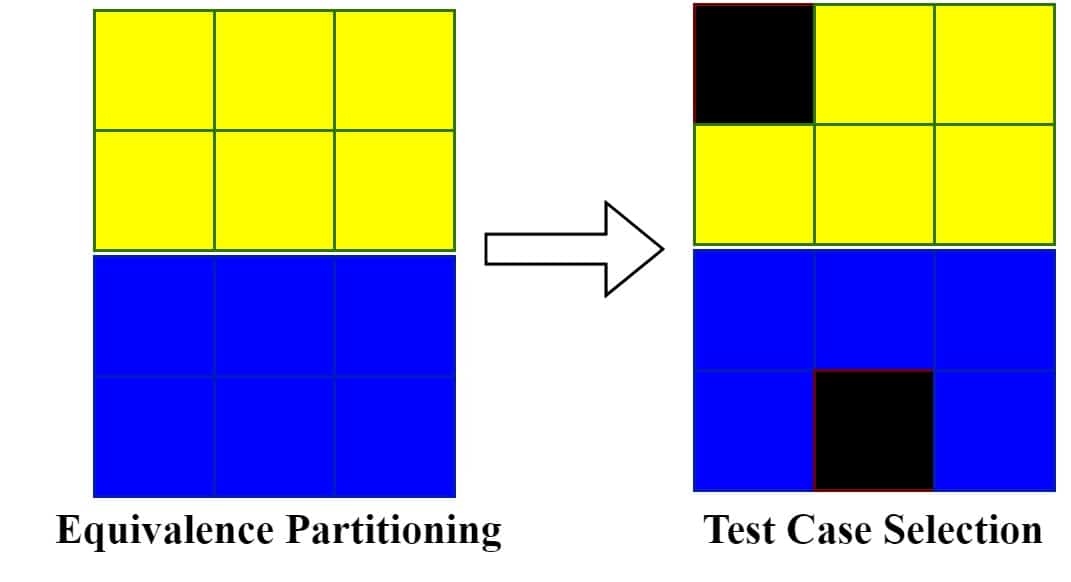1. Introduction
Equivalence partitioning is a powerful software testing technique that efficiently identifies test cases and ensures comprehensive test coverage.
In this tutorial, we’ll learn about the key concepts, practical applications, and advantages of equivalence partitioning.
2. Overview
Equivalence partitioning involves identifying “equivalence classes,” which are groups of input values that exhibit similar behavior in the software. We group input values into these classes and select representative test cases to validate the software’s functionality. This approach helps us efficiently test the software with optimal coverage.
In equivalence partitioning, we select one input from each equivalence class to identify test cases. This active approach makes testing all inputs within the same class unnecessary. As a result, we reduce the number of test cases significantly, saving time and effort while maintaining robust testing.
3. Applying Equivalence Partitioning
Now, let’s explore a real-world example. Let’s consider a login functionality for a web application that requires a user to enter their username and password:

In the first example, let’s say “user123” and “john” are valid usernames, and “user@#$%” and “admin_1” are invalid usernames.
For this example, we select one input from each equivalence class. We’d test with a valid username like “user123” and an invalid username like “user@#$%”. This approach efficiently covers all possible scenarios within each class.
4. Best Practices for Effective Implementation
Let’s have a look at some of the best practices in order to achieve effective implementation.
We should partition inputs wisely to optimize test coverage. This is achieved by carefully dividing them into meaningful and non-overlapping equivalence classes.
We should also give special attention to boundaries between classes as they are susceptible to defects. In addition, it is essential to test inputs close to the boundaries to verify the validity of the boundary conditions.
We should combine equivalence partitioning with other techniques, such as boundary value analysis, which can further enhance test coverage.
Furthermore, regular reviews and updates of test cases are necessary to ensure their continued effectiveness in reflecting changes in equivalence classes.
5. Advantages and Disadvantages of Equivalence Partitioning
Now that we’ve looked into the concept of equivalence partitioning and learned how to implement it effectively let’s explore its advantages and disadvantages in more detail.
5.1. Advantages
Equivalence partitioning allows us to optimize test coverage while minimizing the required test cases. We ensure comprehensive scenario coverage by selecting an input case from each equivalence class:

The image illustrates equivalence partitioning in software testing. We split the data into two subsets and then select a test case from both. This reduces redundancy and saves valuable time and resources.
Additionally, equivalence partitioning enables us to test various scenarios under different conditions thoroughly. We validate valid and invalid inputs, boundary values, and extreme cases. This comprehensive approach enhances our ability to identify defects and vulnerabilities.
The process of selecting test cases becomes straightforward with equivalence partitioning. We only need to choose one input from each equivalence class, eliminating the need to test every possible input value individually. This simplicity enhances test case organization and execution.
Equivalence partitioning also promotes the reusability of test cases. Once equivalence classes are defined, we can reuse the same test cases for similar inputs in different scenarios. This streamlines test maintenance and facilitates regression testing when software changes occur.
5.2. Disadvantages
Despite its advantages, equivalence partitioning does have certain limitations that we need to consider.
Equivalence partitioning may not be ideal for complex software with complex dependencies among input values. Other testing techniques like boundary value analysis or pairwise testing may yield more effective results in such cases.
Equivalence partitioning doesn’t account for the order of input values, potentially overlooking scenarios where input order is crucial. Testers should exercise caution and consider using additional testing techniques to address these cases when necessary.
In summary, equivalence partitioning is a valuable testing technique that empowers testers to efficiently validate software functionality, pinpoint defects, and enhance overall software quality. By leveraging its advantages, we can achieve thorough and effective testing. However, it’s essential to be mindful of its limitations to ensure comprehensive test coverage.
6. Conclusion
In this article, we learned about equivalence partitioning as a valuable testing technique that streamlines the identification of test cases and optimizes test coverage.
Software testers can efficiently validate the software’s functionality by strategically selecting inputs from equivalence classes while saving time and resources.